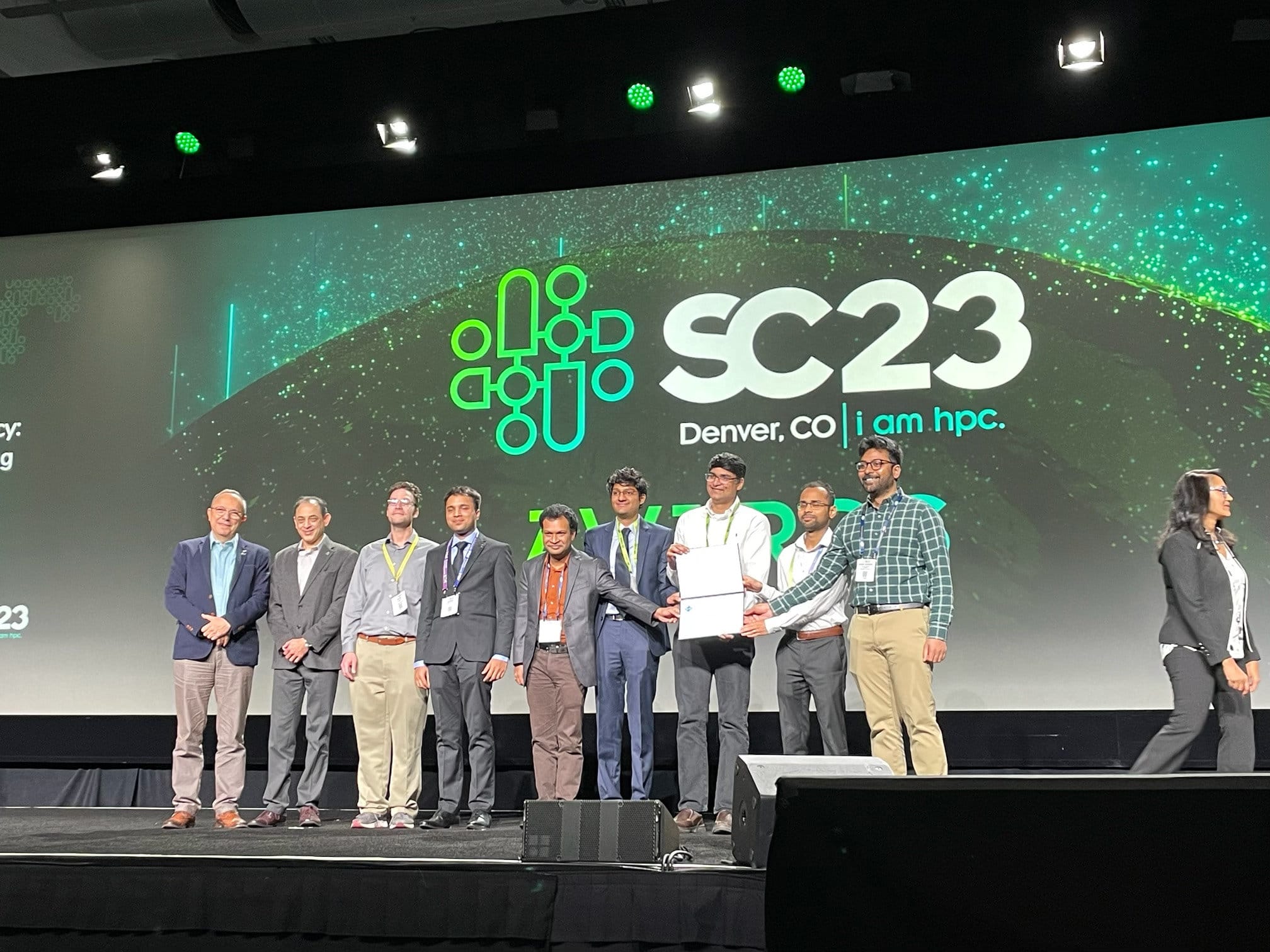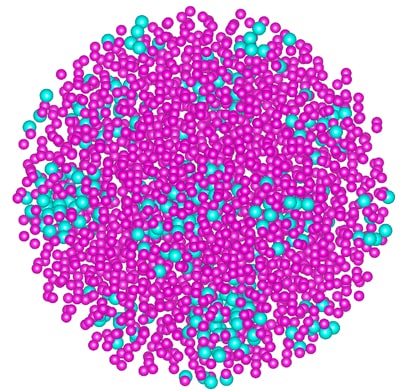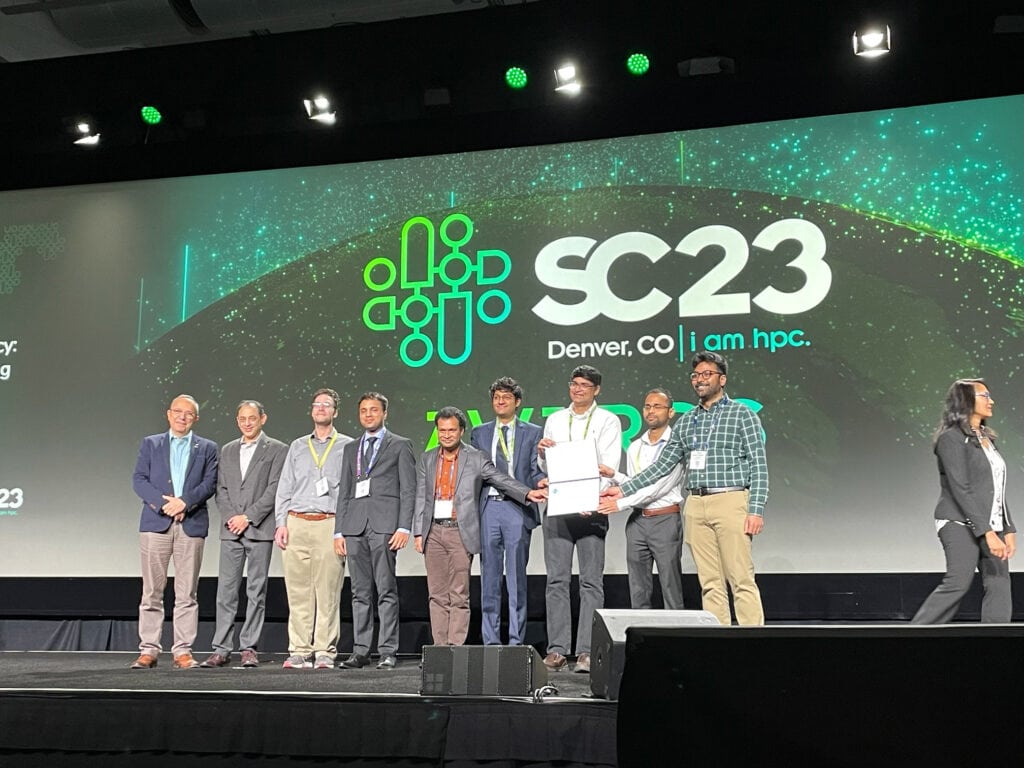
Material simulation with quantum accuracy wins Gordon Bell Prize
The prestigious award offered by the Association for Computing Machinery goes to the team of U-M mechanical engineering professor Vikram Gavini.

The prestigious award offered by the Association for Computing Machinery goes to the team of U-M mechanical engineering professor Vikram Gavini.
Experts
Accurately calculating interactions among electrons has been a major obstacle to reliable material exploration and design through computer modeling, but a U-M-led team developed code that brought quantum mechanical accuracy for large systems into the range of today’s supercomputers.
This breakthrough has now been recognized by the Association for Computing Machinery through the Gordon Bell Prize.
“As we showed in this work, there is now a systematic path to realizing large-scale materials simulations at quantum accuracy,” said Vikram Gavini, a professor of mechanical engineering and materials science who leads the team. “This, in turn, can accelerate our understanding of materials properties and aid in computational design of materials. Application areas where this can have an impact, include designing of better alloys, designing better catalysts, drug discovery, to name a few.”

Explore the forefront of digital engineering
at Michigan Engineering
The utilization of quantum mechanical calculations has greatly expanded society’s ability to characterize the properties and behavior of materials. Within the class of quantum mechanics, Quantum Many-Body (QMB) methodologies represent one end of the spectrum, achieving high accuracy. However, the need to model the quantum wavefunctions of multiple, connected electrons means the computational complexity constrains its application to systems that range from tens of electrons to a few thousand.
Alternatively, Density Functional Theory (DFT) is a simpler and more efficient way to analyze complex materials by considering the density of electrons rather than the many-electron wavefunctions. DFT relies on a universal exchange-correlation (XC) functional—which encompasses the quantum mechanical interactions between electrons. Its exact form is unknown and thus it is approximated. The accuracy of calculations afforded by DFT is tied to the accuracy of XC functionals.

“Detailed calculations of systems of atoms and molecules have had to make a choice between the achievable accuracy and the accessible system size,” said Karthik Duraisamy, professor of aerospace engineering and mechanical engineering and director of the Michigan Institute for Computational Discovery and Engineering. “Professor Gavini and his collaborators have been intensely focused on this issue for more than a decade and have recently developed an approach to break this barrier by bridging QMB methods with DFT to address the accuracy limitation in DFT.”
Gavini’s team developed a machine-learned XC functional with an accuracy equivalent to QMB methods in ground-state energies. The team achieved this by solving the inverse DFT problem—which links DFT and QMB to determine the exact XC potentials that reproduces QMB electron densities—resulting in an XC functional that gives high accuracy commensurate with QMB.
“This recognition is testament to the sustained excellence of Gavini’s group. This talented team of researchers developed several innovations to make this possible, and this work has the potential to pave the way for large-scale predictive modeling of materials physics and beyond. Congrats to the team for ushering in the Exascale computing era at U-M,” Duraisamy added.
As part of their Gordon Bell Prize submission, Gavini’s team conducted a calculation of a dislocation in magnesium with random yttrium solute atoms—a system involving ~620,000 electrons. They achieved an unprecedented sustained performance of 660 petaflops (660 quadrillion floating point operations per second) on the world’s most powerful supercomputer: the Frontier exascale system housed at the Oak Ridge National Laboratory. Notably, this is a ten-fold improvement in sustained performance demonstrated for any ground-state DFT calculation.

“This has been a multi-year effort involving graduate students, research scientists, and collaborators,” Gavini said. “We are very pleased that the work is recognized via this year’s Gordon Bell Prize.”
The team members from the University of Michigan who were involved in this work are Dr. Sambit Das (Assistant Research Scientist, Mechanical Engineering), Dr. Bikash Kanungo (Assistant Research Scientist, Mechanical Engineering), Vishal Subramanian (PhD Candidate, Materials Science & Engineering), Prof. Paul Zimmerman (Chemistry), Prof. Vikram Gavini (Mechanical Engineering, Materials Science & Engineering). The other team members are Gourab Panigrahi and Prof. Phani Motamarri (PhD ’14 ME, Gavini group) from the Indian Institute of Science and Dr. David Rogers from the Oak Ridge National Laboratory.
Written by Connor Titsworth/U-M Office of the Vice President for Research